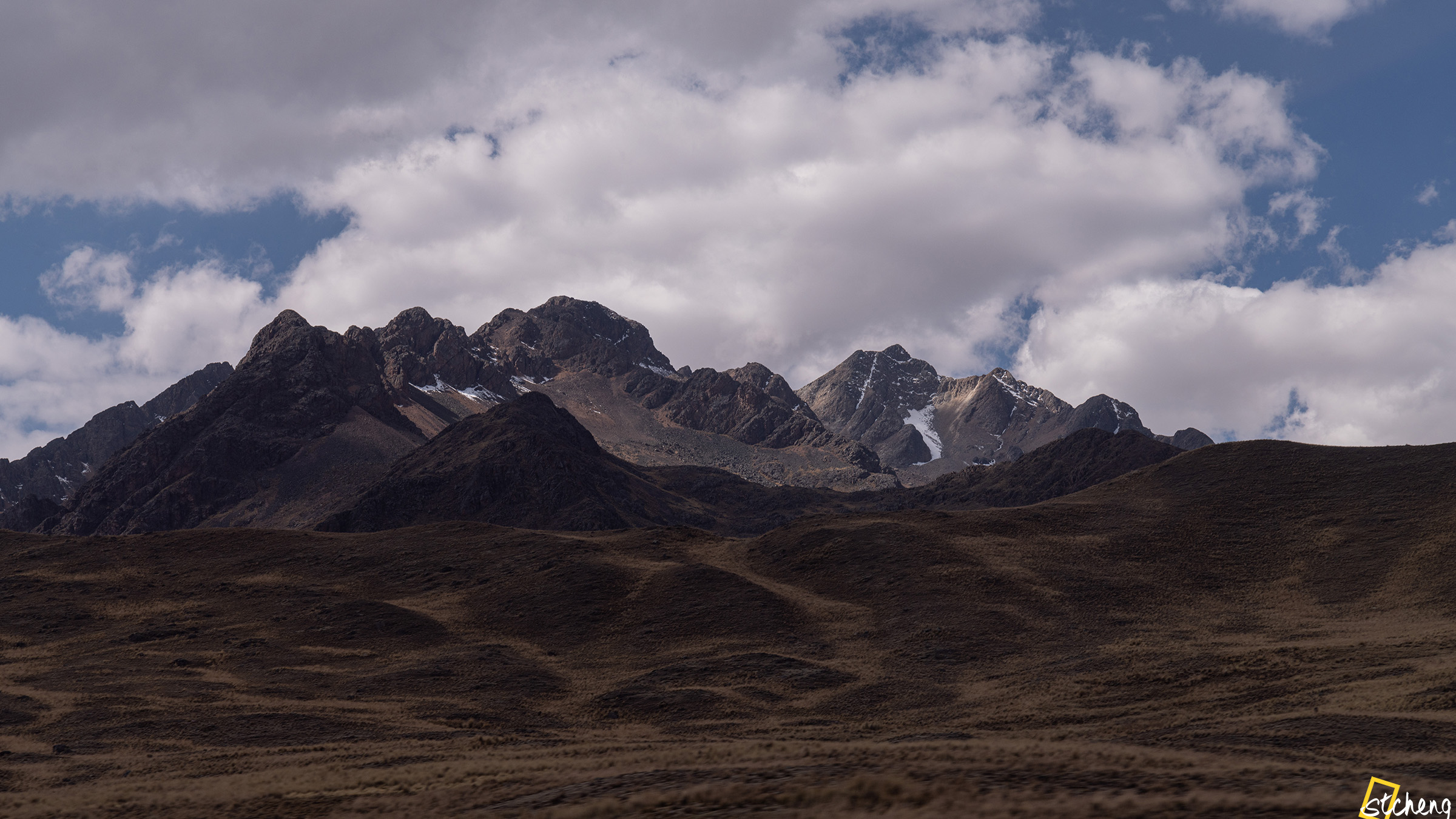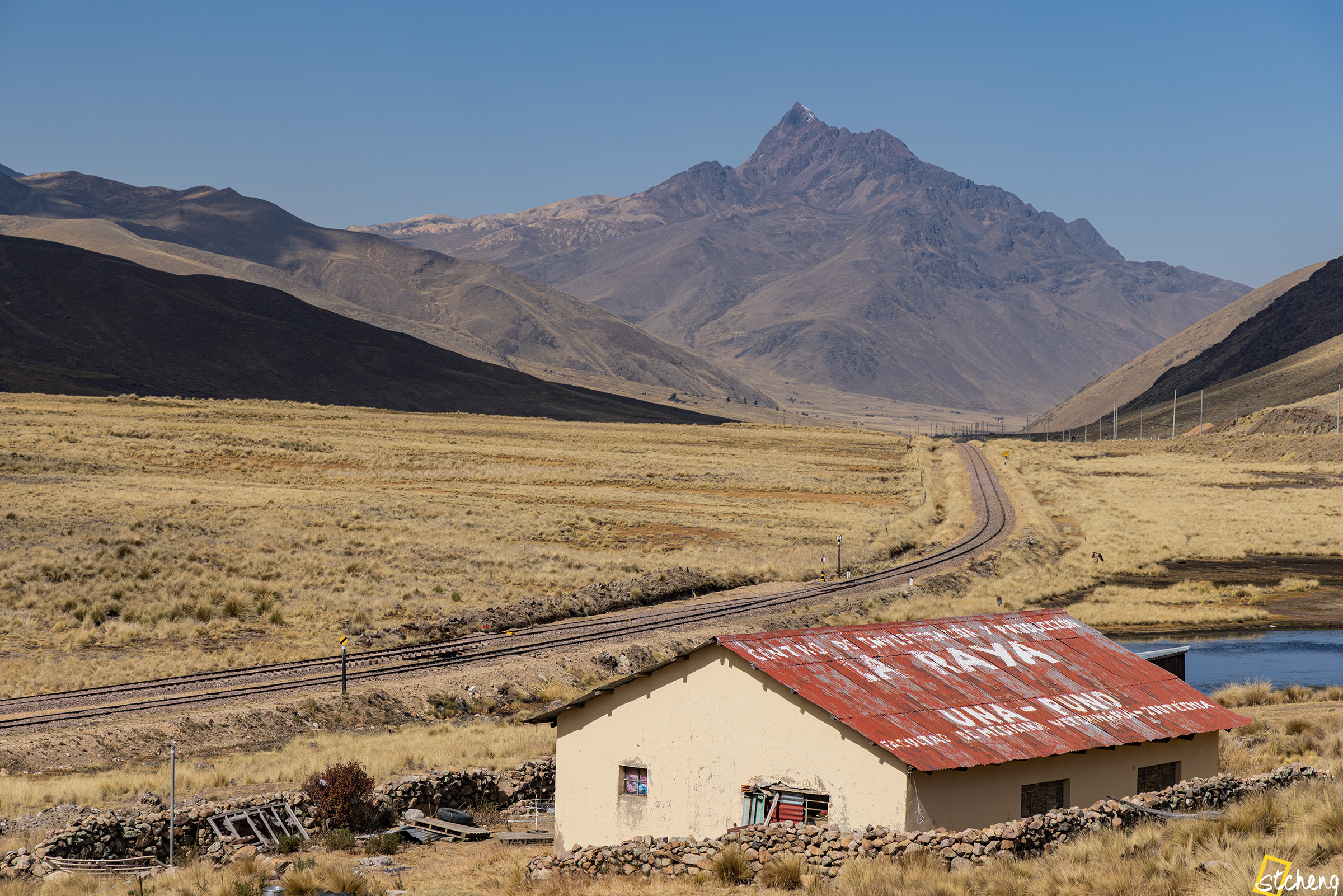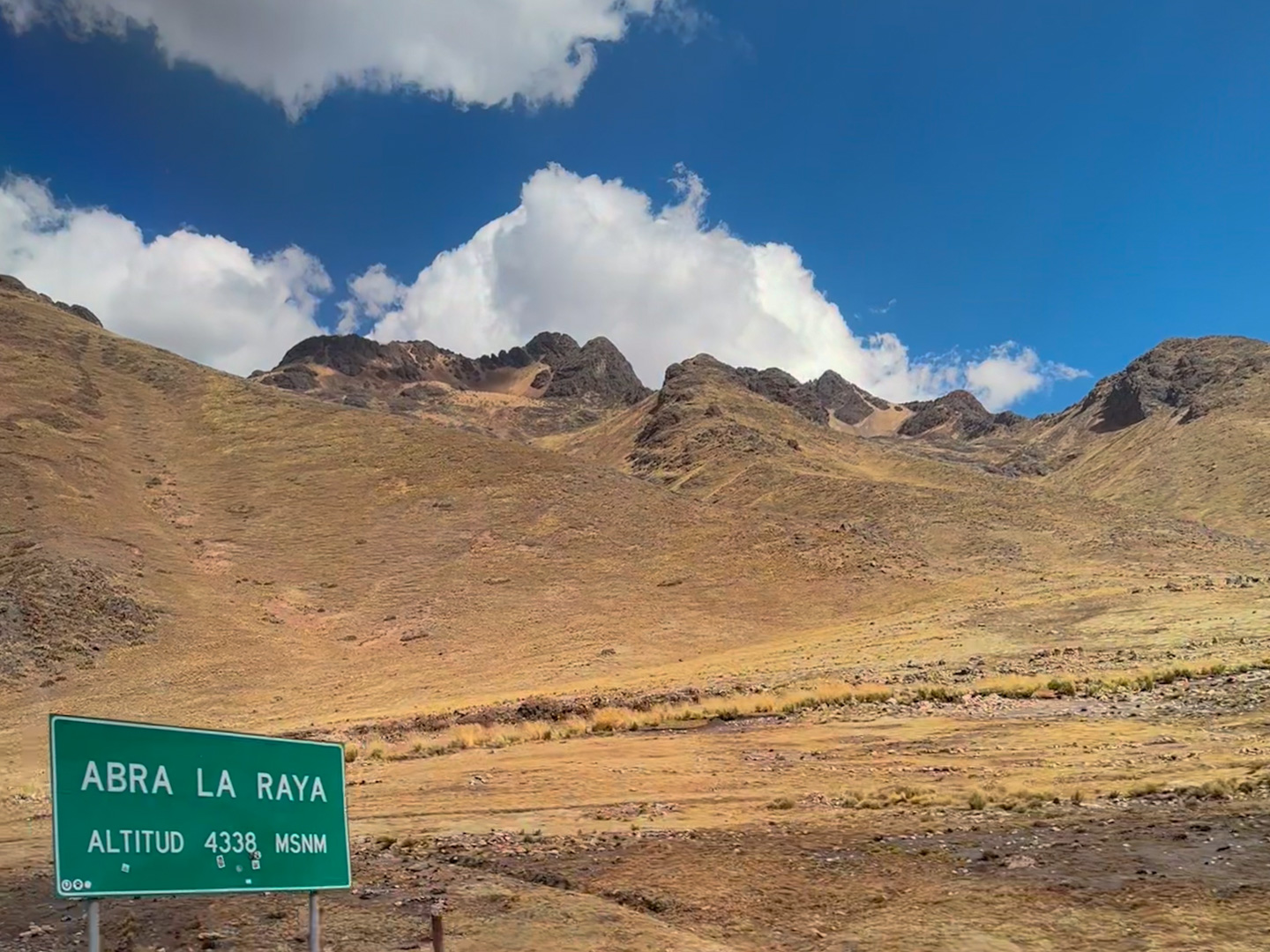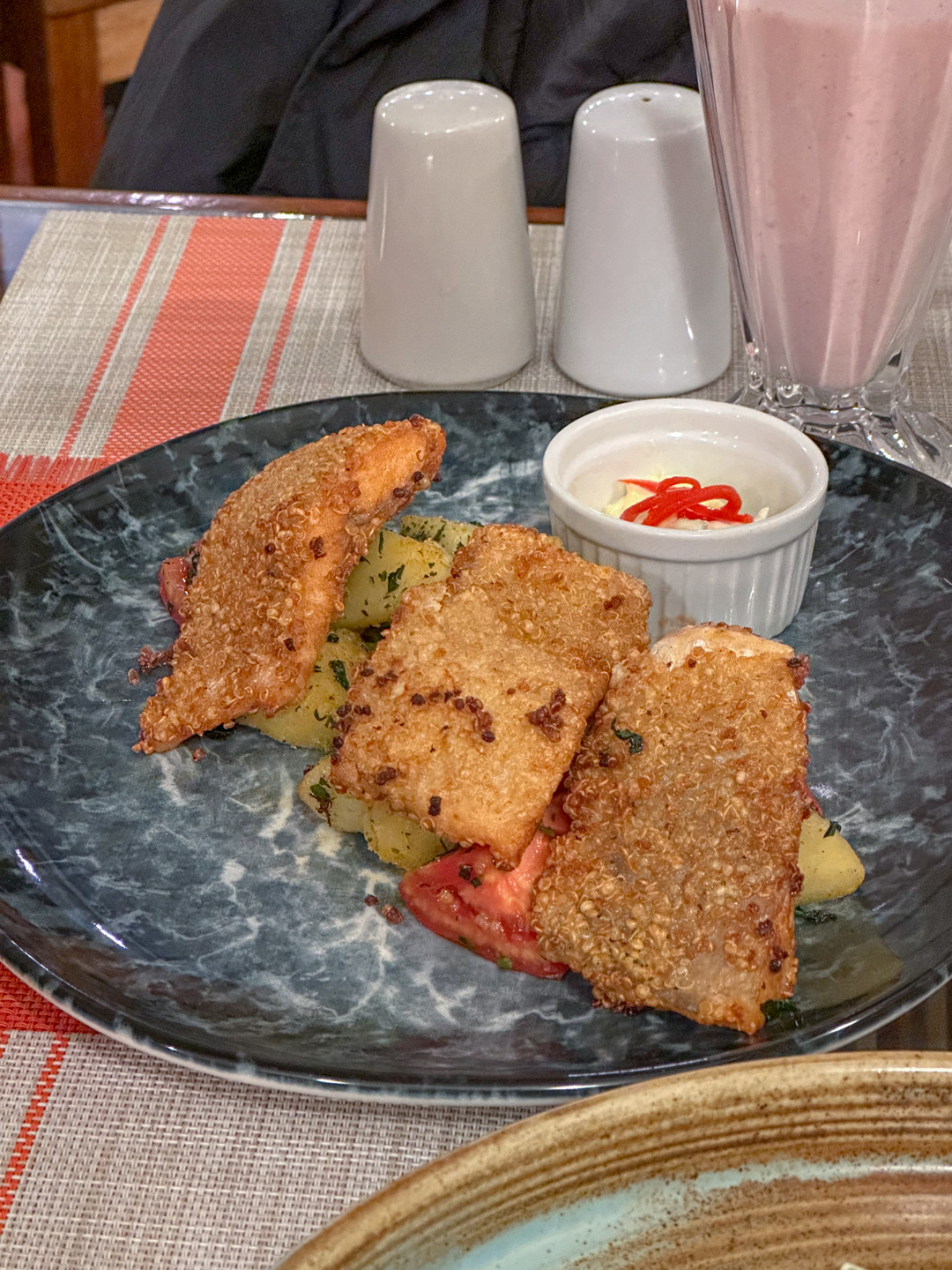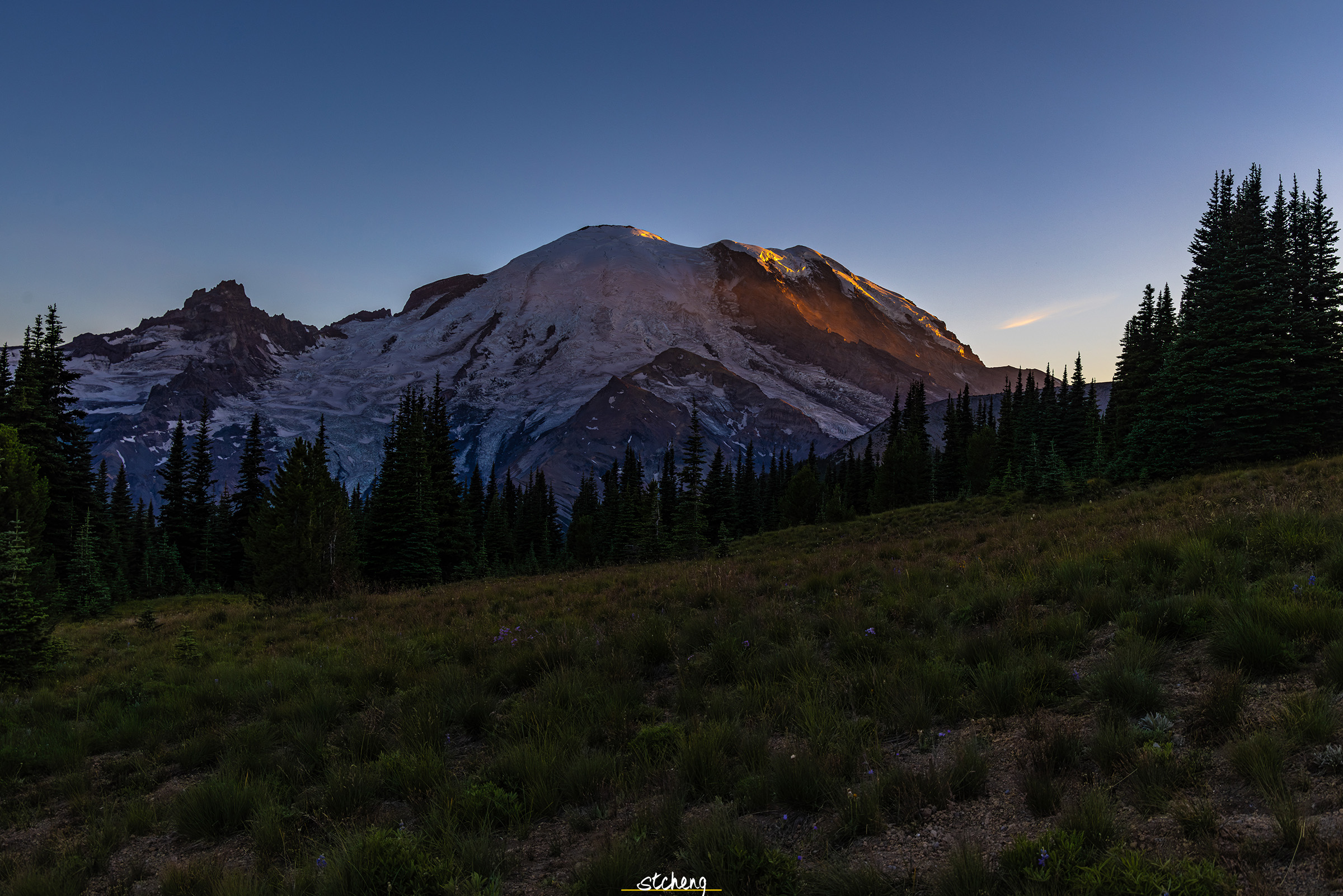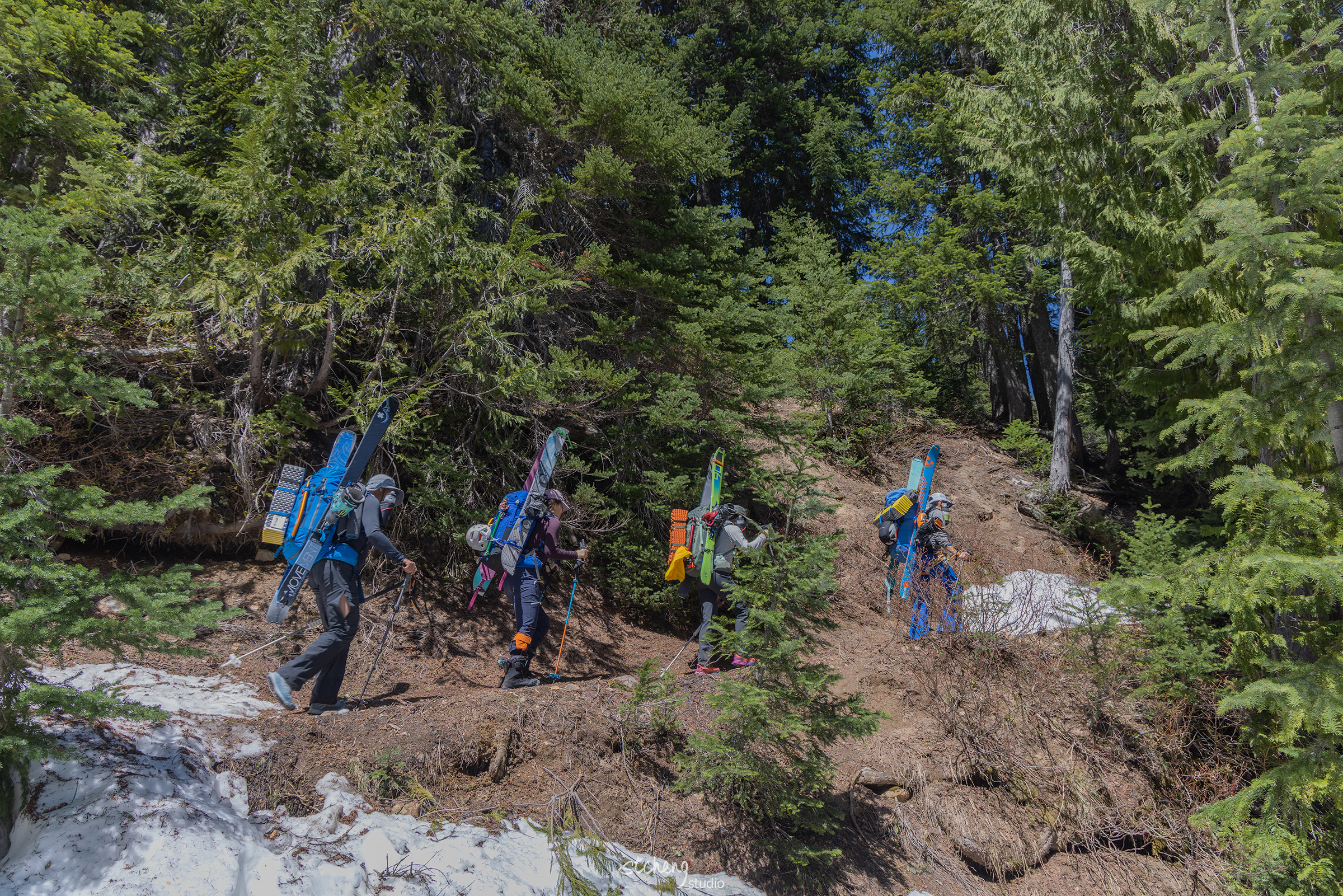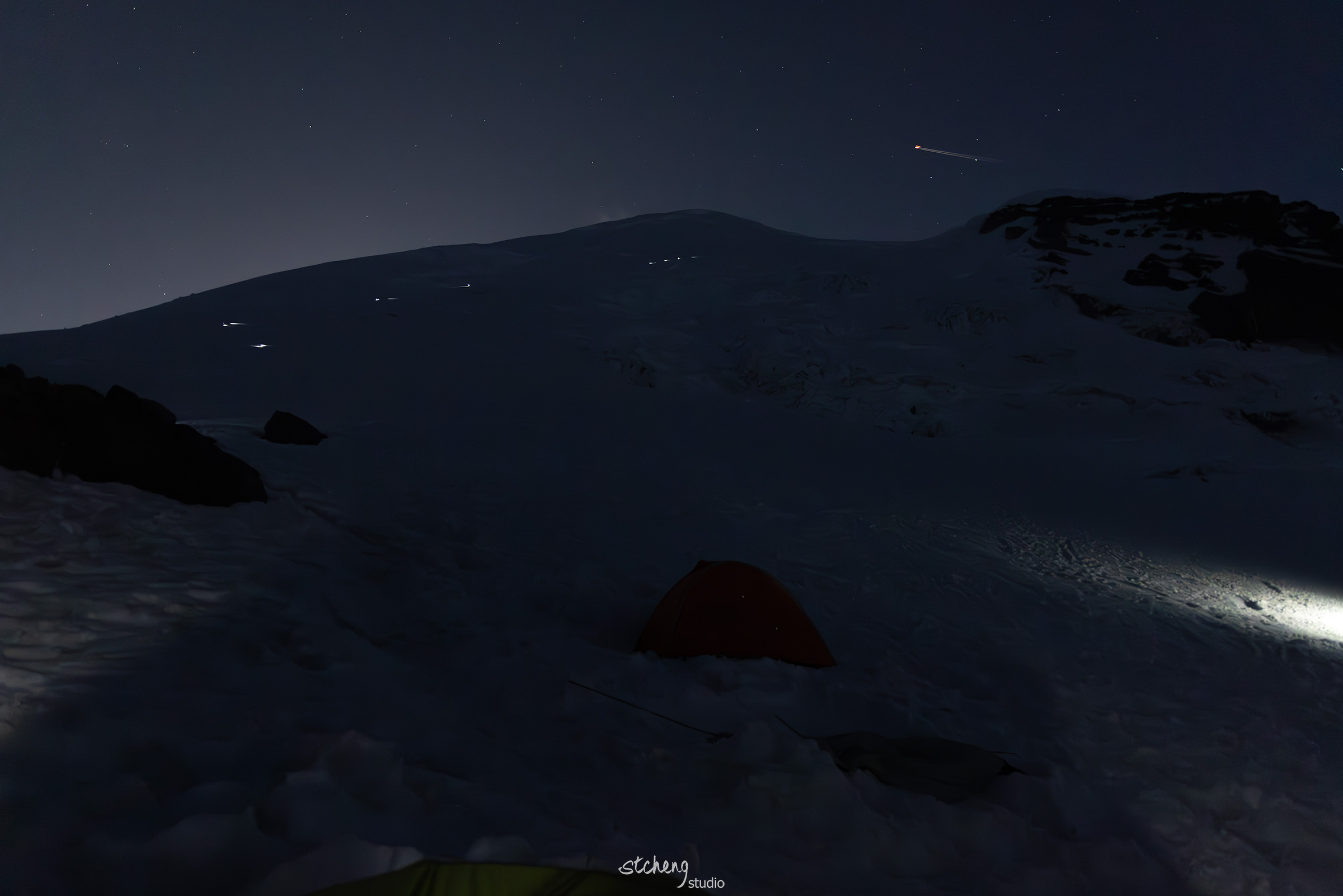Summiting Mount Rainier and snowboarding down is undeniably a significant accomplishment in my life. I’ve been nurturing this dream since my initiation into backcountry snowboarding. Last year, I managed a ‘partial’ successful ascent of Rainier, taking the route up via the Ingraham Glacier. I use the term ‘partial’ because, though we did ascend to the volcano’s rim, extreme wind conditions and near-zero visibility prevented us from reaching the true summit. We were also deprived of the stunning views that the apex of this majestic mountain affords. However, this time, I achieved all my goals: standing on the true summit and descending via the Emmons Glacier on my splitboard.

This marked my third departure from the White River campsite and subsequent arrival at Camp Schurman. My first venture here was to snowboard down the Inter Glacier from the apex of a wedge aptly named the Steamboat Prow. Standing on the precipice of the prow, facing the imposing mountain, one finds oneself at a loss for words to capture its awe-inspiring grandeur.
The second occasion was an attempted summit akin to this most recent venture, albeit it was one that fell short due to the relentless high winds that set upon us in the night and persisted until dawn. Two of our three tents were nearly swept away, leading to a harrowing situation where all seven of us found ourselves crammed into a single 2-person tent, seeking refuge from the elements. It was a long, trying night that culminated in the inevitable decision to retreat.

We set off at around 10AM. The trek was laborious, requiring us to bear the weight of all our equipment and camping gear on our backs until we finally reached the Glacier Basin and the adjacent river bank. Ascending under the relentless sun was no small feat; it was a taxing endeavor. Engulfed by this challenge, my friends and I kept our eyes on the trail, barely noticing the surrounding vistas, pushing ever upward. The melting snow underfoot added a slippery element to our climb, particularly challenging for us snowboarders.
By the time we transitioned from the Inter Glacier to the Emmons Glacier, it was nearly 4PM. Upon arrival at our Camp Schurman campsite, we were relieved to find the wind mild. While the occasional gust did catch us off guard, it was, for the most part, bearable.
Dinner time always stands out as a high point in any camping experience. On this occasion, we had the pleasant surprise of encountering another team of mountaineers who were, as it turned out, friends of one of our teammates. This fortuitous meeting quickly evolved into an impromptu gathering, our groups merging together in the spirit of camaraderie to share our meals and snacks. Alongside the standard fare of Mountain House meals, I had the foresight to pack a Nissin instant noodle pack from Japan, introducing a delightful twist to our mountaintop dinner.

Here is a webcam link provided by the National Park of the view from Camp Schurman.
Despite the sun still lingering in the sky, we retired to our tents around 9PM. Though part of me was eager to capture the sunset’s picturesque beauty, fatigue took precedence. Resigned to my exhaustion, I reassured myself that prioritizing a good night’s rest was crucial for our impending summit attempt.

Although we set our alarms for 3AM, it wasn’t until 5AM that we were fully prepped and ready to begin our ascent. After less than thirty minutes, we found ourselves standing on the slope, basking in the dawn sunlight filtering in from the distant Cascade Range. A sea of clouds gradually gathered, swallowing the lower forests and leaving only the peaks of the Cascade Range visible, akin to islands emerging from an ethereal ocean. The sky transitioned from a dark blue to a brilliant orange before settling into a clear azure. We divided ourselves into two teams, tethering each member with ropes, and steadily continued our upward journey.
Throughout our ascent, we crossed multiple crevasses. Each chasm in the glacier loomed like a gaping maw, capable of swallowing anything unfortunate enough to tumble into its depths. Peering into these crevasses revealed dark blue ice that both reflected and absorbed the sunlight, trailing off into an eerie, inscrutable darkness.
Due to a recent crevasse opening, the previous week’s direct route to the summit was rendered impassable. Consequently, we were compelled to take a significant detour via the Winthrop Glacier before circling back towards the summit. The concluding 400-foot ascent proved exceptionally challenging. The wind grew more forceful and the snow firmer beneath our feet. When we finally stood victorious atop Mount Rainier, the clock read just shy of 1PM.
The summit of Rainier resembled more of a plateau than a peak. The wind up there was extraordinarily fierce, making it nearly impossible to stand. The vast craters, both east and west, were so extensive that it was hard to conceive of them forming a circular shape. A track bisected the middle of the crater, allowing climbers from other faces of the mountain to reach the summit via different routes. In the distance, I could distinctly make out the profiles of Mount Adams and Mount St. Helens.
|
|
 |
 |
The descent, I would say, was quite an ordeal; one where we found ourselves sliding on the surface of a freezing glacier littered with irregularly shaped ice chunks. For the sake of safety, we had to dismount our snowboards and navigate on foot across the traverse route, keenly aware of the crevasse lurking beneath. Upon returning to the Emmons Glacier, we retraced our morning tracks to ride downhill. Despite basking under the sun for almost an entire day, the glacier remained as icy as stone. A fragile layer of ice crystals lightly coated the surface, undulating like sand waves when wind stirred them. Alarmingly, the crevasses we had crossed earlier in the morning were noticeably widening.


It wasn’t until we neared the glacier’s base, with our campsite tantalizingly in sight, that we encountered some harvestable corn snow. By the time we returned to our tent, the clock was inching towards 4PM. We hadn’t anticipated such an extended descent from the upper mountain. Exhaustion settled over us, necessitating a short nap to rejuvenate before packing up and embarking on our return journey. The night before, a ranger had checked our itinerary, leaving us with a caring reminder: “The true summit isn’t the top of Rainier, but the White River campsite.” It was time for us to make the final march to our “true summit.”
Within the confines of the Inter Glacier, the snow was softer yet still suitable for riding. Thanks to our reliable snow gear, we managed to return to our original transition point without much delay. After an additional hour or so of weary walking down the trail, we finally reached our car around 8PM!

I can now proudly declare that I have backcountry snowboarded on Mount Rainier :p











